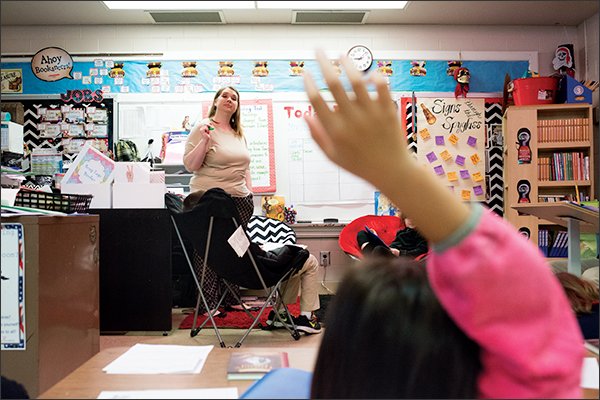The Future of Curriculum: Playlists, Open Ed., and Tough Choices for Teachers

If you’re an education company trying to figure out where K-12 curriculum is headed, no single storyline is likely to suffice.
But there are a number of clear and identifiable trends at work, which my colleagues and I explore in a new Education Week special report, “Navigating New Curriculum Choices.”
Districts are adopting approaches to curriculum that are in some cases smaller and more granular, and in other instances bigger and more ambitious.
Some of the stories we see playing out in states and school systems around the country:
- Districts are experimenting with iTunes-style “playlists” of curriculum, in the hope of customizing academic content to student needs, as my colleague Benjamin Herold explains. It’s a strategy that seems to fit with districts’ demands for “personalized learning,” a goal of many K-12 systems. Playlists hold potential, but finding and managing them can be time-consuming and expensive.
- There’s a growing interest among K-12 officials in turning to entire, comprehensive curriculum developed as “open” educational resources, meaning materials created on licenses that allow them to be freely shared and modified. That’s a shift from the current use of many open materials by educators, which tended to be picked and chosen for individual lessons, as I report in my story.
- Teachers are playing a more central role in building curriculum from the ground up. Witness what’s happened in Louisiana, where the state has asked 75 teachers to help design its English/language arts curriculum. My colleague Madeline Will takes readers there.
- While educators are taking the initiative to pick-and-choose curriculum, they face a bewildering number of choices in putting together academic materials these days, Michele Molnar and Liana Heitin Loewus report. Their story looks at the dilemmas facing districts, and how they’re managing their choices.
How will the traditional publishing industry, and small, up-and-coming companies fare in the changing environment? That depends on the nature of their offerings–their size, their target audience, their delivery systems, and other factors.
Jay Diskey, the executive director of the pre-K-12 Learning Group of the Association of American Publishers, points out that when it comes to the growth of open educational resources–such as the work of the provider Open Up Resources–the implications for commercial providers probably aren’t as simple as flourish or perish.
Questions about whether Open Up Resources will succeed or fail are off the mark. “It will probably do both,” Diskey says in our report. Whether open-resource providers can bring materials to scale “depend(s) on what they think ‘scale’ is.”
Check out the full report for other observations and insights.
Photo: Bellaire Elementary teacher Meredith Starks teaches one of her units to her 3rd graders. A study issued last year found that the teacher-made units are having an impact: Louisiana teachers’ work is more aligned with the common core than that of teachers in other states.—Hannah Baldwin for Education Week
See also:
